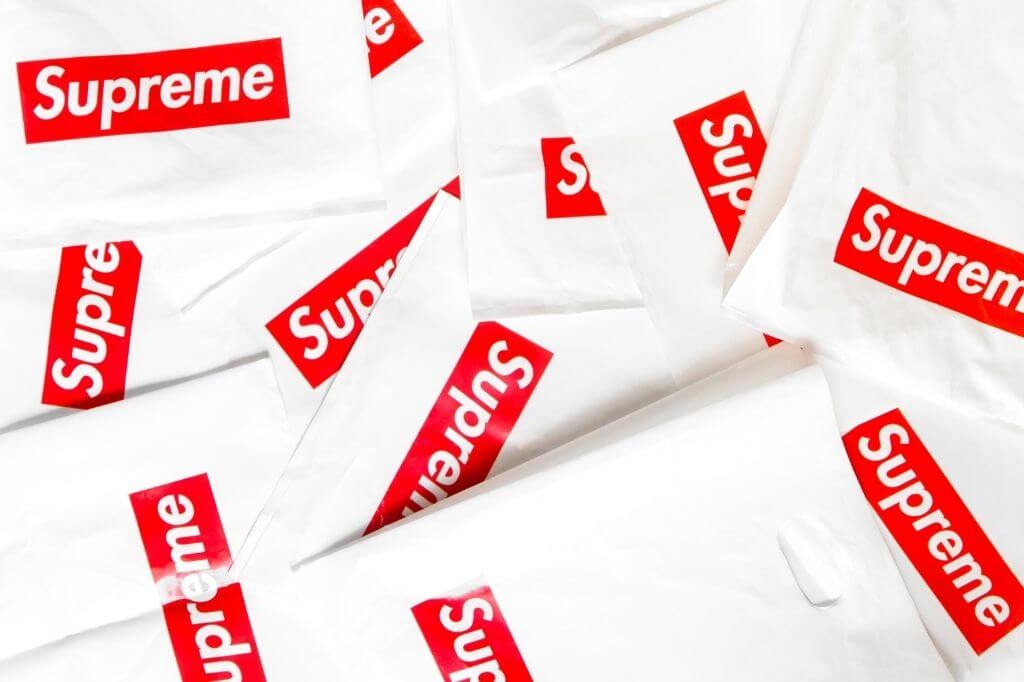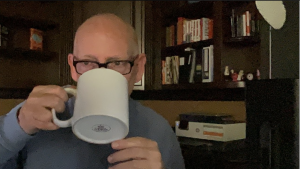Month: February 2022
Questions Proactive People Ask – Leadership Freak
Questions Proactive People Ask
You’re doomed if you can’t change direction. A turbulent world requires you to be light on your feet. But you can’t get anywhere when you constantly change direction.
Constant reacting eventually makes you feel powerless.
We give away control because it feels safe.
Questions proactive people ask:
#1. Questions about roots or fruits:
- What is the root of this issue?
- What is the fruit of this issue?
- What comes to mind when we focus on roots instead of fruits?
You’re solving symptoms when the same issue keeps kicking you in the pants.
#2. Questions about pattern recognition:
The pattern is the problem when you keep solving the same problem.
- How many times have we faced this situation in the last 30 days?
- What ways of thinking/behaving propagate this situation?
- What else might we try?
When the same issues keep coming back, current solutions aren’t working.
“If you always do what you’ve always done, you’ll always get what you’ve always got.” Jessie Porter
#3. Questions about fire or smoke:
When the house is on fire get the heck out. Most of the time the house is not on fire, even though there’s lots of smoke.
If you can show up tomorrow morning and do your work, the house is not on fire.
- What’s the short-term win?
- What’s the medium-term win? This issue will be a win in 30 days if ….
- How did yesterday’s solution cause today’s problem?
The hardest problem to see is the one you caused yourself.
#4. Questions to ask before doing anything.
- What happens if we press forward without changing anything?
- What’s within our control? Trying to control the uncontrollable leads to disappointment.
- Who should take action now?
- How much of this situation is about people? When an issue is about people, everything else is smoke.
How might people be proactive in a reactive world?
Like this:
Like Loading…
Episode 1628 Scott Adams: I’m Ready to Take the L on Vaccinations. I Wasn’t Convinced Until Today
Episode 1628 Scott Adams: I’m Ready to Take the L on Vaccinations. I Wasn’t Convinced Until Today

Content:
- Biden’s 1st year, 60% say not successful
- 57% say we’re more divided than ever
- Death count for vax delay till after election?
- UK ends ALL face mask mandates
- My COVID Twitter polls result
- Feb1 We’re Done
- If you would like to enjoy this same content plus bonus content from Scott Adams, including micro-lessons on lots of useful topicsto build your talent stack, please see scottadams.locals.com for full access to that secret treasure.
Podcast: Play in new window | Download
How to Radically Stand Out with Brand Marketing
Jeff Bezos’s private space technology company Blue Origin was founded back in 2000. You’d think that no one could recreate a product so sophisticated and advanced as space rockets, right?
In 2002, Elon Musk created Space X. He was swiftly followed by Richard Branson and Virgin Galactic in 2004.
With enough resources, products can always be copied. It’s tough to compete on product alone and you’re likely to see diminishing returns.
The solution: build a brand. The moat you create with brand is harder to replicate.
According to Edelman research, when that trust is built, 61% of people will become vocal advocates, 57% of people will purchase more products, and 43% will stay loyal.
In this article, you’ll understand how to build a memorable brand that your customers want to buy from. Learn how to identify what your customers want from your brand, how to build momentum with content, and then explore some brands that excel at brand marketing.
Brand is your strongest asset
For most of 2021, CXL didn’t have a marketing team. And yet, revenue went up by 45% YoY.
Why? Brand.
Your brand is your strongest, most sustainable long-term asset. It keeps working for you when you’ve logged off. Your brand is your reputation – that intangible thing that determines whether your customers trust you above the rest.
There have never been more brands competing for attention than there are right now. Studies show that only 5% of B2B buyers are ready to buy. You can’t force the other 95% to move into a buying position now; you can only create brand awareness so you’re what they think of when they’re ready.
If you spam the non-buyers with sales CTAs, you’ll only annoy them.
Your brand is how you differentiate, build awareness, and sear your solution into customers’ minds so they think of you when that time comes.
Why should customers choose to do business with you? How do you ensure they have a first-class experience?
Build the answers to those questions into your brand strategy. Lean into your strengths, and don’t try to appeal to everyone.
CXL, for example, leads on the strength of its course instructors and the depth of its course coverage. Our instructors are the top 1% of practitioners from real, successful companies—not self-labeled gurus.
By demonstrating proven marketing expertise, we can provide a consistent, valuable experience for our audience.
Build a radical, memorable brand strategy
Define your unique value proposition— the primary reason your customers should buy from you. This process helps you zero in on who your customers are, what they need, and what they expect from you. Do this, and you’ll know who your brand is for (and who it’s not).
Understanding what your customers crave
Your brand is a combination of words and action. Both should reflect what is important to your target market and accentuate your…
3 Ways Tom Brady Was Extraordinary and You Can Be Too
3 Ways Tom Brady Was Extraordinary and You Can Be Too
I’ve been a fan of New England sports teams since I was a kid. But when Tom Brady went to Tampa Bay, I started rooting for the Buccaneers.
Low expectations – high performance:
6 quarterbacks were drafted before Tom Brady.
- Chad Pennington – drafted 18th. (Played 11 seasons.)
- Giovanni Carmazzi – drafted 65th. (Never played.)
- Chris Redman – drafted 75th in the third round. (Started 12 games.)
- Tee Martin – drafted 163rd in the fifth round. (Played 3 games.)
- Marc Bulger – drafted 168th in the sixth round. (Played 9 seasons.)
- Spergon Wynn – drafted 183rd in the sixth round. (Started 3 games.)
- Tom Brady – drafted 199th in the sixth round. (Played 22 seasons.)
In the 2021 season Brady set a career high in passing yards (5,316) and led the NFL in touchdown passes (43). USA Today
3 ways Tom Brady was extraordinary – and you can be too:
#1. Rise above expectations.
No one could have expected the 199th draft pick would become the undisputed greatest quarterback of all time.
Expect more from yourself than others expect from you.
#2. Always work to improve.
Professional athletes work hard – a few work harder than the rest. Larry Bird of the Celtics, Michael Jordan of the Bulls, and Tom Brady of Tampa Bay, for examples.
“… he never lost that competitive fire to be the best.” John Elway
If you don’t want to be like Tom Brady, be like Will Smith. “… while the other guy’s sleeping? I’m working.”
Of all the times I saw Brady in interviews, I can’t remember him complaining. I’ve seen him upset, but he always focused on getting better, even when his team won.
#3. Practice gratitude.
I know you’re supposed to thank your teammates when you win. But I think Brady actually meant it.
How might you follow Tom Brady’s example today?
Episode 1629 Scott Adams: Biden’s Disastrous Press Conference, Havana Syndrome, and More Ridiculousness
Episode 1629 Scott Adams: Biden’s Disastrous Press Conference, Havana Syndrome, and More Ridiculousness

Content:
- COVID deaths under age 75 without a comorbidity?
- Democrats fail to change filibuster rule
- AG Letitia James “significant” evidence on Trumps
- MKUltra project, controlling human mind
- Misrepresentation of Voting Rights Act
- Biden’s press conference and gaffs
- If you would like to enjoy this same content plus bonus content from Scott Adams, including micro-lessons on lots of useful topicsto build your talent stack, please see scottadams.locals.com for full access to that secret treasure.
Podcast: Play in new window | Download
How to Build and Measure Brand Awareness
Studies show only 5% of B2B buyers are ready to buy right now. You can’t force the other 95% into a buying position by spamming them with nurture sequences.
When people are finally ready to make a purchase, your goal should be one of two things:
- Customers recall your brand, or at least;
- They recognize you in a lineup of other brands.
If you haven’t invested in brand awareness marketing then the opposite will happen. Your audience will flock to brands with a strong reputation because they don’t associate you with their need.
In this article, you’ll learn what brand awareness marketing is and how to become the only obvious choice when the prospect is ready to buy.
What is brand awareness marketing, really?
Brand marketing is the most powerful weapon in your growth arsenal. When done right, it works tirelessly to build your reputation.
Brand is how you win in crowded markets. It’s what builds shortcuts to your solution in your customers’ minds when it comes time to decide which is right for them.
Brand awareness marketing is the way to accomplish that. It’s the sum of activities to help your brand become the instinctive choice for consumers.
Those strategies are built on two components: brand recognition and brand recall.
- Brand recognition happens when your target audience recognizes your brand when they see it (even if they’ve never used your solution). This level of familiarity means you have successfully made it past “obscurity.” Your brand is now closer to being chosen when the need arises.
- Brand recall goes a step further. It happens when a customer can name your brand when reminded of what you sell (aided recall) or without that reminder (unaided recall).
Brand awareness marketing’s most formidable opponent is direct response marketing. Direct response aims to generate immediate action by asking customers to do something. Brand awareness marketing aims to make your brand the name people think of first and trust above all others.
While direct response is still popular, it’s not what it used to be.
- There’s too much competition today asking people to take action. Consumers need trust to drive decision-making and loyalty.
- You’re not guaranteed to reach your customers when they need you. Hammering people who aren’t ready to buy with cold calls and nurture sequences isn’t likely to be profitable.
If you want to direct more of the 95% of consumers that aren’t yet ready to commit toward your brand and away from competitors, brand awareness marketing is the way to go.
Why should marketers care about brand awareness marketing?
To get more eyes on your brand and build trust, you must understand and communicate why you’re different. What makes you the right solution to a specific problem?
It’s becoming increasingly difficult to stand out on qualities like features and customer service alone. Brand awareness solves this. Anyone can create a chatbot, but there’s only one Drift.
Take Canva,…
No One of Us Is as Smart as All of Us—Treat People as Partners
No One of Us Is as Smart as All of Us—Treat People as Partners
New Book Giveaway!
20 copies available!!
Leave a comment on this guest post by Ken Blanchard and Randy Conley to become eligible for one of 20 complimentary copies of their new book, “Simple Truths of Leadership: 52 Ways to be a Servant Leader and Build Trust.“
Deadline for eligibility is 2/5/2022. International winners will receive electronic version.
“No One of Us Is as Smart as All of Us” is a simple truth of leadership that is common sense—why isn’t it common practice?
Brains:
Some leaders think all the brains are in their office.
Self-serving leaders spend lots of time trying to prove they are in charge. They think it’s their job to look over everyone’s shoulder and check that things are being done ‘correctly’. Sadly, these leaders miss the reality that people are capable of much more than they are given credit for.
Trustworthy servant leaders let people bring their brains to work.
These leaders see team members as partners, not subordinates. They understand leadership is about working side-by-side with people, freely communicating and sharing information.
How can you encourage and strengthen high-performing teams?
Smarter together:
#1. Face the facts.
The people around you already know you don’t know everything.
People don’t buy it when you act like you have all the answers. They know you don’t. There’s no shame in admitting you aren’t perfect. In fact, it will demonstrate vulnerability and help you earn their trust.
#2. Ask for help.
When you have a problem to solve, let your people know you need their suggestions. Involving people in decision-making is smart—and the best way to respect people’s experience and insight.
#3. Respect contribution
Worried that some team members are thinking of joining the “Great Resignation”? Acknowledge their hard work and explain why their role in the company is important.
When people feel valued, they think less about jumping ship.
You know how much you need everyone on your team. So tell them. Treat them as partners. Let them know you value their strengths and their input. You’ll quickly realize it’s the best way to lead.
How might leaders treat people like partners?
Ken Blanchard and Randy Conley talk leadership with Dan Rockwell:
Listen to Ken and Randy talk about pivotal moments in their journey. Ken talks about Egos Anonymous.
Ken Blanchard/Randy Conley:
Ken Blanchard is the bestselling author or coauthor of more than 65 books including the iconic The One Minute Manager®, and Chief Spiritual Officer of The Ken Blanchard Companies®. Randy Conley…
Episode 1630 Scott Adams: There Is Lots of Juicy News Today. Come Enjoy it With a Beverage
Episode 1630 Scott Adams: There Is Lots of Juicy News Today. Come Enjoy it With a Beverage

Content:
- Top issues concerning people
- Our perfect election process needs fixing?
- Who can’t figure out how to vote?
- COVID restrictions being lifted
- Why push Putin closer to China?
- Fake News in the news today
- If you would like to enjoy this same content plus bonus content from Scott Adams, including micro-lessons on lots of useful topicsto build your talent stack, please see scottadams.locals.com for full access to that secret treasure.
Podcast: Play in new window | Download
The Agency of the Future is Remote Working

When you think of an office, you’re probably picturing something like this:

Or if you’re feeling fancy (and worth billions of dollars) like Google is, so you’re thinking something like this:

These days you can even think of an office as a rented, shared space like WeWork:

Thanks to 2021, more offices than ever before are looking like this, home offices that we’ve set up in the quietest corner of our homes:

Although let’s be realistic…how many of your home offices actually look like this:

Yep, I’m raising my hand too.
When you think about work in 2021 and beyond—we’re no longer just thinking of this:

We’re thinking about a hybrid or totally remote model:

And that changes how we build our agencies.
Our offerings and products can stay the same—but the way our agency works internally…can completely shift.
There are 3 organized models that you get to choose to run your agency from nowadays:
#1: Gig Model
Short-term tasks that can be managed by one, or at most, a handful of people. With the Gig Model, you’re the opposite of a stage 5 clinger. Your business runs project-to-project and you’re focused on excelling at each of those projects—and then moving on.
There’s no need for water stations or happy hours because your team is distributed. You’re entirely remote and all of your workers are freelancers. Chances are you’re the only person on your payroll.
This model works great for startups that can’t afford full-time employees yet and are still getting themselves off the ground.
#2: Corporate Model
Hire a team to work on long-term open-ended jobs that can last for years. This is what you picture when you think of an office—lots of computers and people. We’re thinking of water station conversations and in-person team happy hours (remember those?!).
This is how DigitalMarketer ran pre-March of 2020. We had some freelancers, but the majority of our workforce was in-person, full-time employees. And it worked!
This model used to be an inevitable transition once your business required some full-time staff. It usually starts by bringing on some sort of operations or marketer—and quickly turns into full-time HR people, office managers, and interns.
But there’s a model in-between that most of us have missed—and it wasn’t our fault. We missed it because pre-March of 2020…we just weren’t thinking this way.
We were all thinking home offices and gig workers → rented office space and full-time employees. That was success in terms of an agency. Especially if you could afford the *good* coffee and the fancy snacks for your team.
Having to figure out how to run our businesses entirely remotely for months and in some cases over a year has taught us that…
![The Future of Ecommerce is THIS! – Ryan Deiss [VIDEO]](https://jeffcassman.biz/wp-content/uploads/2022/02/TC-2021-Ryan-Speech-excerpt-with-captions_YOUTUBETHUMB_FutureofeCommerce-1200x675.jpg)










